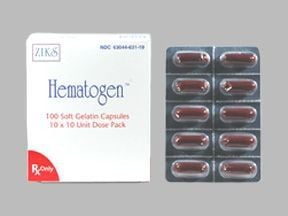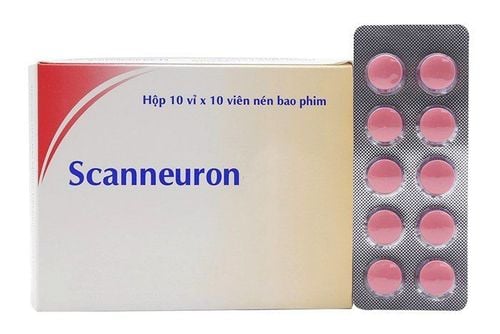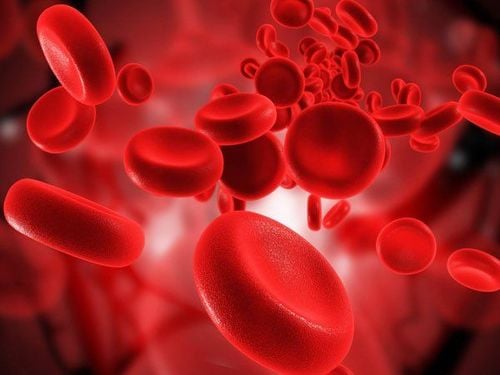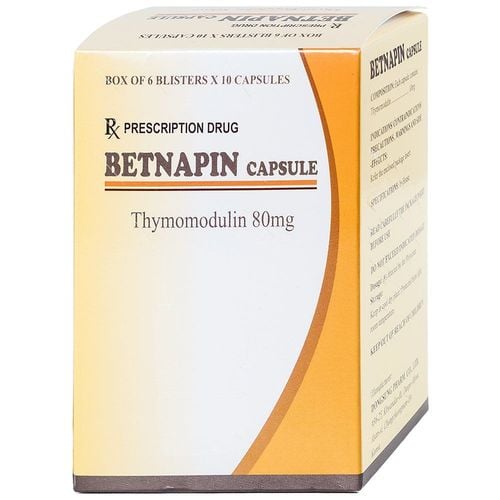This is an automatically translated article.
Calcilinate is a medicine for the prevention and treatment of poisoning caused by folic acid antagonists. To ensure the effectiveness of using Calcilinat, users need to follow the instructions of their doctors, and refer to more information about the uses of Calcilinat in the following article.
1. What are the uses of Calcilinate?
1.1. What is Calcilinate? Calcilinate belongs to the group of drugs for minerals and electrolytes. Calcilinate drug includes the following ingredients:
Main active ingredients: Calcium Folinate equivalent to Folinic Acid 50 mg. Excipients: 2% NaOH, Mannitol for injection The included solvent tube contains: 5 ml sterile distilled water. The drug is prepared in the form of freeze-dried powder for injection with the content of 50mg, box of 1 vial with 1 tube of distilled water.
Calcilinate is recommended for use in adults.
1.2. What is Calcilinate used for? Calcilinate is prescribed by a doctor in the following cases:
Prevention and treatment of poisoning due to Folic Acid antagonists (eg, when taking high doses of Methotrexate). Folic acid deficiency leads to megaloblastic anemia. In combination with 5-fluorouracil therapy in the treatment of late rectal cancer. Contraindications:
Patients who are allergic to the main active ingredient Folinic acid or any of the excipients of the drug Megaloblastic anemia and pernicious anemia caused by vitamin B12 deficiency.
2. Usage of Calcilinat
2.1. How to use Calcilinat medicine Calcilinat is administered intramuscularly or intravenously. Intravenous injection is administered slowly over five to ten minutes, as the drug contains calcium. The maximum recommended intravenous infusion rate is 160mg/min. Take Calcilinate exactly as recommended or directed by your doctor. Use the drug according to the way used, do not arbitrarily add or reduce the therapeutic dose. 2.2. Dosage of Calcilinat Treatment and prevention of hematologic toxicity associated with folic acid antagonists:
For detoxification, intravenous or intramuscular Calcilinate in a dose equivalent to that of the antagonist used. should be used, as soon as possible after an inadvertent overdose is detected (the golden hour is within the first hour). Calcilinat intramuscularly 6 to 12 mg, every 6 hours, 4 times, to manage side effects that occur with moderate doses of methotrexate. In combination with high doses of methotrexate in anticancer chemotherapy, rescue therapy with folinic acid is given after the initiation of methotrexate for a period of time (6-24 hours) to allow methotrexate to have an anti-cancer effect. The rescue dose of folinic acid is 10 mg/m2 injected, followed by 10 mg/m2 orally every 6 hours, until serum methotrexate levels fall below 10–8 M. If, after 24 hours of administration of methotrexate, the patient's serum creatinine rises to more than 50% of the pre-methotrexate creatinine concentration or the methotrexate concentration is higher than 5.10 - 6 M, the folinic acid dose should be increased immediately to 100 mg/m2. every 3 hours, until methotrexate concentration drops below 10 - 8 M. The usual dose of folinic acid used to prevent serious and life-threatening toxicity in immunocompromised patients with trimetrexate glucuronate for Pneumocystis 2 carinii pneumonia is 20 mg/m2 every 6 hours. Continue taking folinic acid for at least 72 hours after the last dose of trimetrexate. Dosage of trimetrexate and folic acid should be adjusted according to hematological tolerability. The dose of folinic acid to prevent pyrimethamine hematologic toxicity varies based on the dose of the folic acid antagonist and the clinical status of the patient. The dose of folinic acid (oral or intravenous) is 5-15 mg/day for patients taking pyrimethamine. Megaloblastic anemia:
Use folinic acid 1 mg/day, intramuscularly, to treat megaloblastic anemia caused by folic acid deficiency. The duration of dosing depends on the blood response to the drug, both in peripheral blood and bone marrow. In general, a patient's response to medication depends on the extent and nature of the folic acid deficiency, but patients with deficiency usually respond quickly. Within the first 24 hours of treatment, the patient's condition improved, and the bone marrow began to produce red blood cells with solid nuclei within 48 hours. Reticulocytosis usually begins within 2–5 days of starting therapy. For the treatment of megaloblastic anemia due to congenital dihydrofolate reductase deficiency, folinic acid 3 to 6 mg/day should be administered intramuscularly. Combination therapy with 5-fluorouracil in the treatment of advanced colorectal cancer:
Slow intravenous injection of folinic acid 200 mg/m2 for > 3 minutes, then administer intravenous 5-fluorouracil 370 mg/m2. Or: Slow intravenous injection of folinic acid 20 mg/m2 followed by intravenous 5-fluorouracil 425 mg/m2. With both regimens above, continue treatment as above for 5 days. Repeat treatment, after about 4 weeks with 2 more sessions as above. The regimen may then be repeated, at intervals of 4 to 5 weeks, provided that the toxicity of the previous course of treatment has subsided. Treatment when missed dose:
Calcilinat is made by medical staff at medical facilities, so it will limit the missed dose. But if for some reason you are unable to take the medication on time, try to schedule a time to take it as soon as possible. Do not double the therapeutic dose.
Treatment of overdose:
Manifestation: When taking too high a dose of Calcium Folinat can neutralize the chemotherapeutic effect of folic acid antagonists. Treatment: currently there is no specific treatment, only symptomatic treatment is essential.
3. Notes when using Calcilinat
There is a potential risk when using Calcilinat in patients with undiagnosed anemia, because the drug can mask the results of a diagnosis of pernicious anemia or other forms of megaloblastic anemia due to deficiency vitamin B12. Symptoms of hematologic indices may decrease while neurological complications progress. These spots can severely damage the nervous system before an accurate diagnosis can be made.
Calcium Folinate increases the toxicity of 5-fluorouracil, so the combination therapy of Calcium Folinate and 5-fluorouracil should only be used by experienced physicians. Complete blood count should be checked prior to each course of treatment, repeated weekly for the first two courses, and once in each subsequent course, each time a combination of Calcium Folinate and 5-fluorouracil is used. Reduce the dose of 5-fluorouracil in patients with moderate or severe hematological or gastrointestinal toxicity. Stop therapy when the white blood cell count falls to 4,000/mm3 and the platelet count is 130,000/mm3. This combination therapy is also discontinued when there is clear evidence of tumor growth.
This combination therapy should be used with extreme caution in the elderly and debilitated patients...
Effects on drivers and machine operators: No data have been found to indicate an effect. while driving and operating machinery.
Use only for pregnant and lactating women when absolutely necessary.
4. Calcilinate side effects
Common:
Stomatitis, pharyngitis. Diarrhea . Anorexia, nausea, vomiting. Hair loss. Skin inflammation. Leukopenia after each course of treatment. Uncommon:
Decrease in platelets, platelets, granulocytes. Myocardial ischemia, angina pectoris. Gastrointestinal ulcers and bleeding. Whole body allergy. Acute cerebellar syndrome, nystagmus, headache. Dry skin, chapped, erythematous dysarthria on the palms and soles. Narrowing of the lacrimal duct, changes in vision, lacrimation, photophobia. Disorientation, confusion Thrombophlebitis, epistaxis, nail changes.
5. Calcilinate drug interactions
High doses of folic acid neutralize the antiepileptic effects of phenobarbital, phenytoin and primidone and increase the number of seizures in susceptible pediatric patients. High doses of Calcium Folinate may decrease the effect of methotrexate injected into the spinal canal. Calcium Folinate increases the toxicity of 5-fluorouracil.
6. How to store Calcilinat
Storage time for the drug Calcilinat is 36 months from the date of manufacture. Keep the medicine in a dry place, avoid direct sunlight to cause drug change, store the medicine at a temperature not exceeding 30 degrees C. Keep out of reach of children. and pets. In addition to the above important information, when using Calcilinat, patients should also pay attention to strictly follow the instructions of a specialist to get the best treatment results.













